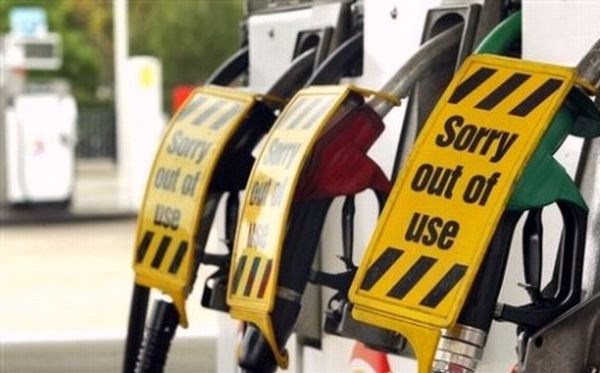Published April 4, 2011, Los Angeles Daily Journal – Twenty-one million barrels. Crude oil, that is; or more specifically, the amount of crude oil the United States consumes on a daily basis. What is surprising about this is not that most of our supply comes from foreign sources – that is a fact adopted by all but the most extreme skeptics; what is surprising is that the United States outstrips every other country’s consumption by an order of magnitude practically unimaginable. While the United States consumes 21 million barrels a day, the next highest single consumer is China, with its 1.3 billion people, who consume seven million barrels per day.
Think this disparity is because China has yet to fully realize its industrial revolution? Consider the fact that the United Kingdom consumes two million barrels a day, and the entire European Union (consisting of 27 member countries) consumes 14 million barrels.
America’s disparate consumption of oil creates two obvious, ever-present problems: oil supplies are not infinite, and reliance on foreign oil subjects us to the whims of others. Just when will oil supplies expire? No one really knows for certain, in part because oil exploration is an inexact science, and in part because oil rich countries tend to frequently “update” their stated oil reserves, perhaps in an effort to raise their international relevance.
In 1980, Saudi Arabia reported that it had reserves of 168 billion barrels of oil. By 2008, that number had increased to 264 billion barrels, despite a continuous drain on reserves through daily use. Other neighboring countries have followed suit. In 1980, Iran claimed a reserve of 58 billion barrels, by 2008 that figure had risen to 138 billion. That same year, the United Arab Emirates claimed 30 billion in reserves, but by 2008 the number had grown to 98 billion. Regardless of which reports one wants to believe, under all circumstances, it appears that we will burn through the world reserves within the next 100 years, which means that we are only a generation or two away from facing a brand new frontier.
And, even if oil supplies were limitless, continued unrest in the Middle East only serves to underscore the problem created by relying on OPEC (Organization of the Petroleum Exporting Countries) for our oil supply. Anyone old enough to recall the 1973 Arab oil embargo will understand just how quickly life can change when unlimited access to oil suddenly terminates.
Bipartisan thoughts aside, the current presidential administration has done much to begin the long haul to rectify this problem. Last Wednesday, President Barack Obama delivered a major policy speech at Georgetown University, entitled “Blueprint for a Secure Energy Future,” wherein he announced a broad push to cut America’s reliance on foreign oil by one-third by 2025. As part of the plan, by 2015 all new cars and trucks bought by the federal government will be alternative-fuel vehicles – a number that currently totals 663,000 vehicles according to the U.S. General Services Administration. In addition, the administration plans to form “partnerships” with private companies that want to upgrade their large fleets with alternative-fuel vehicles, handing out attractive financial incentives to companies who make the switch.
However, perhaps the biggest push is President Obama’s plan for the private sector, where he is considering increasing the CAFE (Corporate Average Fuel Economy) regulations – the minimum fuel economy standards that auto manufacturers must meet across all vehicle lines – from its current level of 30.2 miles per gallon to an average of 62 mpg by 2025. To understand just how drastic a move this is, consider that in 1978, when the CAFE rules took effect, the standard was 18 mpg, and from 1989 to 2009, the level stagnated at 27.5 mpg.
Consistent with this, the U.S. Department of Transportation and the U.S. Environmental Protection Agency have released a “Notice of Intent to Improve Fuel Economy and Reduce Greenhouse Gas Emissions for 2017-2025,” which considers decreasing greenhouse gas emissions by six percent a year for the years in question, with the net result being 62 mpg by 2025. The agencies are also considering three, four and five percent decreases, with a three percent decrease resulting in a 47 mpg level by 2025. As President Obama stated, “We cannot keep going from shock to trance on the issue of energy security, rushing to propose action when gas prices rise, then hitting the snooze button when they fall again.”
The U.S. Department of Defense is also getting involved, experimenting with alternative fuel sources for military operations. Just two weeks ago, an F-22 Raptor flew a maiden test flight at Mach 1.5 on a 50-50 fuel blend of conventional petroleum-based jet fuel and a biofuel derived from camelina, a weed-like plant not used for food. Noting “no noticeable differences” from traditional jet fuel, the test will perhaps pave the way further for exploration of alternative fuel sources in commercial and military aviation.
Will hybrid and electric vehicles, and alternative fuel aircraft be the solution? Perhaps. Or, perhaps other technologies will be invented, or reinvented, that will pave the way for a substantial reduction in our oil consumption. Whatever the outcome, one constant remains: Until a solution is found, we are only a misstep away from being foisted into another energy crisis that could substantially alter life as we know it. And, this is an outcome we simply cannot afford.
